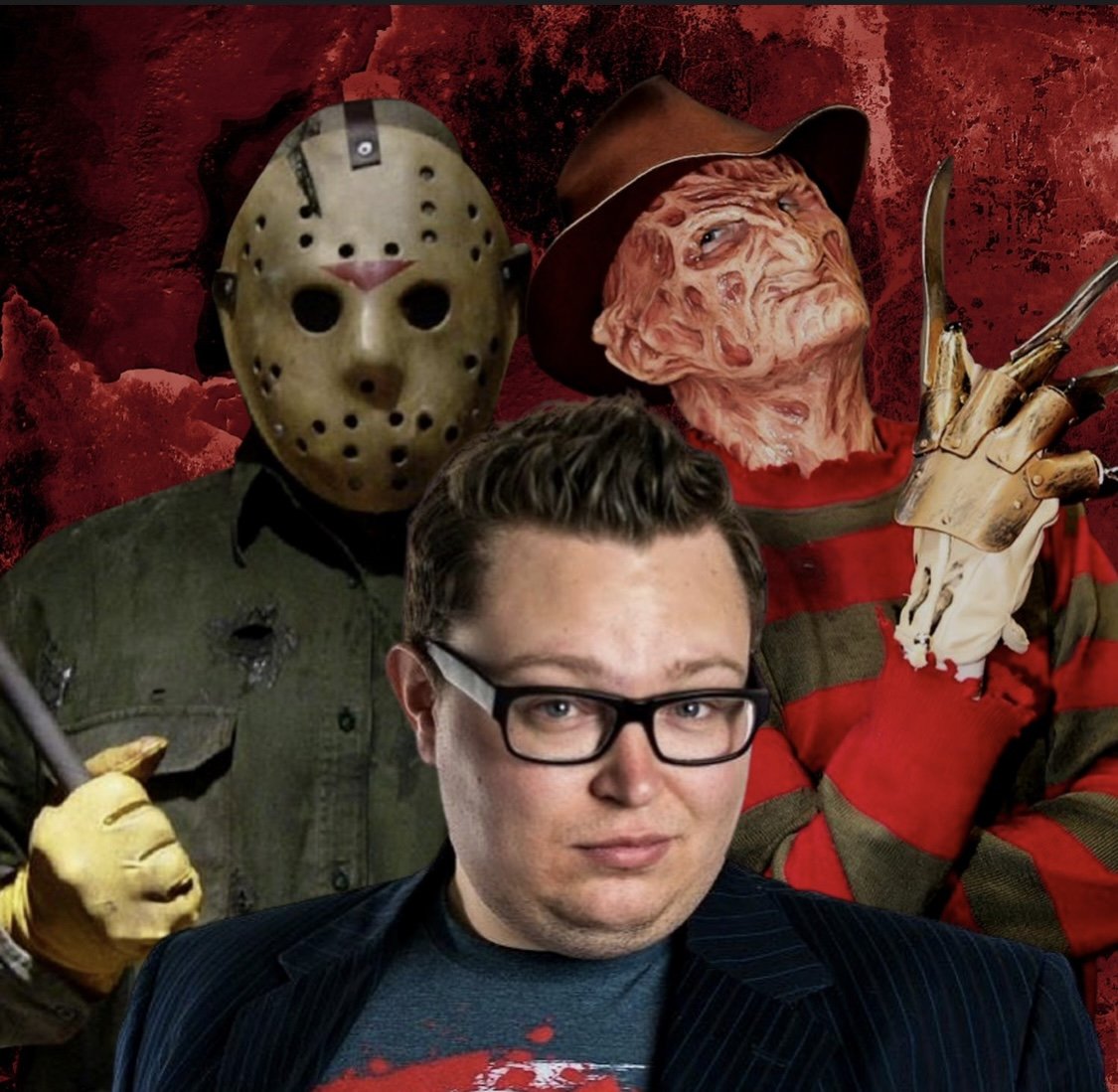“CALL OF THE VOID” (2025) Merges Sci-FI & Horror In Sonic Harmony (REVIEW)
Sci-fi and horror are like the perfect dinner date. While one brings the mind-bending concepts, the other delivers the spine-chilling terror. Sci-fi lets you imagine worlds so strange they bend your reality, while horror makes sure you question if you can even handle them. Whether it’s creepy robots or alien invasions, the blend of the unknown and the fear of the unseen guarantees you’ll leave the theater clutching your seat, wide-eyed and paranoid. It’s a match made in movie heaven where the future is terrifying, and the horror is out of this world.
The frightful and terror fueled fans here at Macabre Daily heard the sound of humming that drew our attention to the newest movie from James B. Cox called “Call of the Void”. This movie is a uniquely cinematic experience that had us all ready to walk into the woods and discover more for ourselves.
In “Call of the Void”, director James B. Cox crafts a chilling narrative that intertwines grief, isolation, and the enigmatic pull of the unknown, simply adding a sound as the antagonist. Set against the backdrop of a secluded mountain cabin, the film follows Moray (portrayed by Caitlin Carver), a woman seeking solace after the tragic loss of her brother. Her retreat into solitude is disrupted by the arrival of a college band and their enigmatic professor, who are investigating a mysterious phenomenon around a humming sound that feels to have outer worldly effects on the people who hear it.
The movie’s premise is deceptively simple, but Cox delves deep into psychological horror, exploring the human urge to understand the incomprehensible and the cost of peering too far into the abyss. The Hum, a low-frequency sound that some interpret as a naturally occurring geologic frequency and others believe is a message from something beyond comprehension, becomes the narrative’s nucleus. Is it supernatural? Scientific? Symbolic? The movie refuses to clarify until it’s necessary, and that refusal to do so until needed is where it gains its power.
Cinematographer Rapha Bola’s work is instrumental in establishing the movie’s eerie atmosphere. Bola embraces the organic: dense, oppressive woods where sunlight filters like smoke, long static shots that allow unease to fester, and a muted color palette that drains the environment of warmth in moments to create the night’s isolation. The result is a visual world that feels like it’s held together by woods and a fear of the sounds from the woods. The camera lingers where other horror films would cut in places like on empty rooms, on characters silently giving a stare that would make you shudder, and on half-glimpsed things lurking in the background that may or may not be there. Every frame seems slightly off, subtly warped, echoing Moray’s crumbling mental state.
Carver’s performance is the movie’s emotional anchor, and it is what shows that she was the perfect choice to lead this movie. As Moray becomes increasingly attuned to the story unfolding as if she is right there with the audience. Carver plays her unraveling with quiet precision in the beginning and then amps it up when things need to get serious. She never overplays the madness that surrounds her. She instead moves through stages of her grief and isolation like she’s sleepwalking through a snowstorm, numbed and searching. Of course, that silent getaway gets interrupted when she has unexpected neighbors show up in the next cabins. Her arc in this movie may start as tragic because of the loss of her brother, but she becomes somewhat heroic as the final act of the movie is revealed.
The supporting cast also delivers some very compelling performances from start to finish that add depth to the narrative. Mina Sundwall portrays Lucy, an overly eager and friendly college student who may start to sense that something isn’t quite right with her need to be such a friend to Moray. Christian Antidormi plays Cole, whose character seems more deceptive in the group than the others. Ethan Herisse’s Darryl grounds the movie as the rational voice among the group, who seems shy when first meeting Moray. That is until even he begins to question the loyal nature of his friends and band. Richard Ellis as Sterling, manages to be both charismatic and quietly unsettling, suggesting a mind already too far gone as the movie progresses. It’s a bit of an unexpected transformation between him and his friends as a friendly hike seems to change things quite a lot.
One of the movie’s standout elements is its sound design, as well as the singing when the band is playing. The humming sound when used is not merely a plot device but a character in its own right. It is low, persistent, and mutable. It portrays this when it changes subtly in pitch and tone depending on who’s hearing it. At times, it feels like it’s whispering secrets to the characters on screen. At others, it’s unbearable, and something that could terrify them. We see this a lot with Darryl’s experience in the second act in such an interesting way. The Hum infects not just the characters’ thoughts but the movie itself, and sometimes scenes even when it isn’t being used. You almost feel that some of the characters begin to spiritually and mentally warp around it. Almost in a way that their time seems to stretch or distort, and even makes you wonder if it may drive you mad as well.
“Call of the Void” on paper may not be a crowd-pleaser, and it doesn’t try to be. It’s too slow, too ambiguous, and too existential for that in the best possible ways by almost letting your imagination amp up the fear you feel as you watch it. In a way, it’s almost deeply rewarding by being a rare horror movie that doesn’t just want to scare you, but to haunt you in the quieter, more reflective corners of your mind (and may have you think differently about drinking water while being in the woods). It’s the kind of horror movie that doesn’t end when the credits roll.
It does that because it almost makes you feel that it lingers. It does what the movie does to the characters. It hums a beautiful experience that makes your heart skip a beat. You’ll think about it days later while standing in a silent room, wondering if the sound you hear is real or imagined. Maybe even if it’s something calling to you from deep inside a secluded forest that vastly stretches beyond a way that your mind will never comprehend. A lot of credit of this goes to how the movie not only progresses, but how it ends. It will make you question yourself, your sanity, and exactly what is happening. It is one that you are going to want to rewatch, just to see what subtle hints you may have missed on your first viewing.
“Call of the Void” from Gravitas Ventures will be releasing on digital platforms on April 15th. Stay tuned for more reviews from Macabre Daily of all things spooky, terrifying and cinematic.
Stay up to date with “The Dark Side Of Pop Culture” by following Macabre Daily on Instagram, Facebook, and BlueSky!















